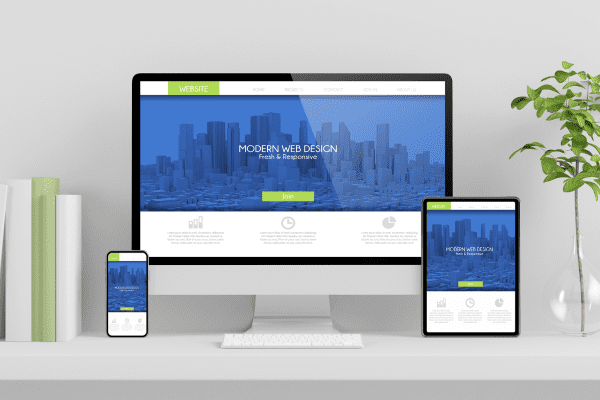In today’s digital age, a strong online presence is essential for businesses and organizations of all types. But beyond aesthetics and user-friendliness, there’s another crucial aspect to consider when developing your website: accessibility. Ensuring that your website is compliant with the Americans with Disabilities Act (ADA) guidelines is not just a legal requirement, but it’s also the right thing to do. In this blog post, we’ll explore why your website should be ADA compliant and the numerous benefits it can bring to your business or organization.
1. Legal Compliance
First and foremost, it’s essential to recognize that ADA compliance for websites is not just a good practice – it’s the law. The ADA, enacted in 1990, prohibits discrimination against individuals with disabilities in all areas of public life. This includes ensuring that your website is accessible to people with disabilities.
In recent years, there has been a significant increase in ADA-related lawsuits, and businesses of all sizes have been affected. Failure to make your website accessible can lead to legal action, fines, and legal expenses. By proactively ensuring ADA compliance, you can avoid costly litigation and protect your business from potential legal troubles.
2. Expanding Your Audience
The primary goal of ADA compliance is to make your website accessible to a broader audience. In the United States alone, there are an estimated 61 million adults living with disabilities. By making your website accessible, you open your virtual doors to a significant portion of the population who might otherwise be excluded.
Moreover, accessible websites can be valuable to individuals with temporary disabilities, such as those recovering from injuries, as well as older adults who may experience age-related impairments. When your website accommodates diverse needs, it becomes more inclusive and attractive to a broader demographic.
3. Enhancing User Experience
ADA compliance isn’t just about meeting legal requirements; it’s also about delivering a better user experience. An accessible website is more user-friendly for everyone. Designing with accessibility in mind often leads to clearer navigation, organized content, and improved site structure. This benefits all visitors, including those without disabilities.
With accessible design, your website becomes easier to use, leading to higher user satisfaction, longer visit durations, and more meaningful interactions. A positive user experience can translate into increased engagement, more conversions, and improved customer loyalty.
4. SEO Benefits
Accessibility features, such as alt text for images and clear HTML structure, can enhance your website’s search engine optimization (SEO). Search engines favor websites that provide a seamless user experience and high-quality content. By making your website accessible, you improve its chances of ranking higher in search results, which can drive more organic traffic to your site.
Additionally, accessibility features can improve page load times, which is another important factor for SEO. Search engines like Google prioritize fast-loading web pages, as they provide a better user experience. ADA compliance, which often includes optimizing your website for speed, can indirectly boost your search engine rankings.
5. Positive Brand Image
Creating an ADA-compliant website also contributes to your brand’s image and reputation. It demonstrates that your organization is committed to inclusivity and cares about the well-being of all visitors, regardless of their abilities. This commitment to accessibility can enhance your brand’s public perception, positioning you as a socially responsible and customer-centric business.
Furthermore, when people with disabilities find your website accessible, they are more likely to share positive experiences with others. This word-of-mouth marketing can significantly improve your brand’s reputation and potentially attract new customers or clients.
6. Meeting Industry Standards
ADA compliance aligns with established industry standards for web development and design. The Web Content Accessibility Guidelines (WCAG) provide a comprehensive set of criteria for ensuring websites are accessible to all. Complying with these standards helps your website adhere to best practices in the industry and maintain a high level of professionalism.
By adhering to industry standards, you demonstrate your commitment to quality and excellence, which can set your business apart from competitors who may not be as proactive in this regard.
7. Avoiding Negative Publicity
In today’s interconnected world, news of ADA non-compliance can quickly spread through social media and news outlets. Negative publicity related to a lack of accessibility can tarnish your brand’s reputation and harm your business’s bottom line.
By taking proactive steps to make your website ADA compliant, you can avoid negative attention and potential backlash from the public. It’s much better to be known for doing the right thing by embracing accessibility rather than facing public scrutiny for failing to meet basic standards.
8. Increased Market Reach
An ADA-compliant website opens the door to new markets and opportunities. Accessible websites are more attractive to government agencies, educational institutions, and other organizations that require ADA compliance when selecting service providers or partners. By meeting these requirements, you can expand your market reach and tap into new revenue streams.
9. Reduced Maintenance Costs
Maintaining an ADA-compliant website often means keeping your site well-organized and free from unnecessary clutter. This can result in reduced maintenance costs, as you’re less likely to encounter issues related to outdated content or a chaotic site structure.
An organized website that adheres to accessibility standards is easier to update and manage, saving you time and resources in the long run.
10. Fostering Innovation
Designing for accessibility encourages creative and innovative problem-solving. It challenges web developers and designers to think outside the box and come up with solutions that benefit all users. This approach can lead to innovations in web design and development that go beyond accessibility and improve the overall user experience.
An ADA Compliant Website Can Make You Money and Save You Money
Ensuring that your website is ADA compliant is not only a legal requirement but a smart and ethical decision. It enhances user experience, expands your audience, boosts SEO, improves your brand image, aligns with industry standards, and avoids legal complications. Moreover, it demonstrates your commitment to inclusivity and fosters innovation in web design. Ultimately, an ADA-compliant website benefits both your business and the people who visit your site, creating a more accessible and equitable online experience for everyone.















